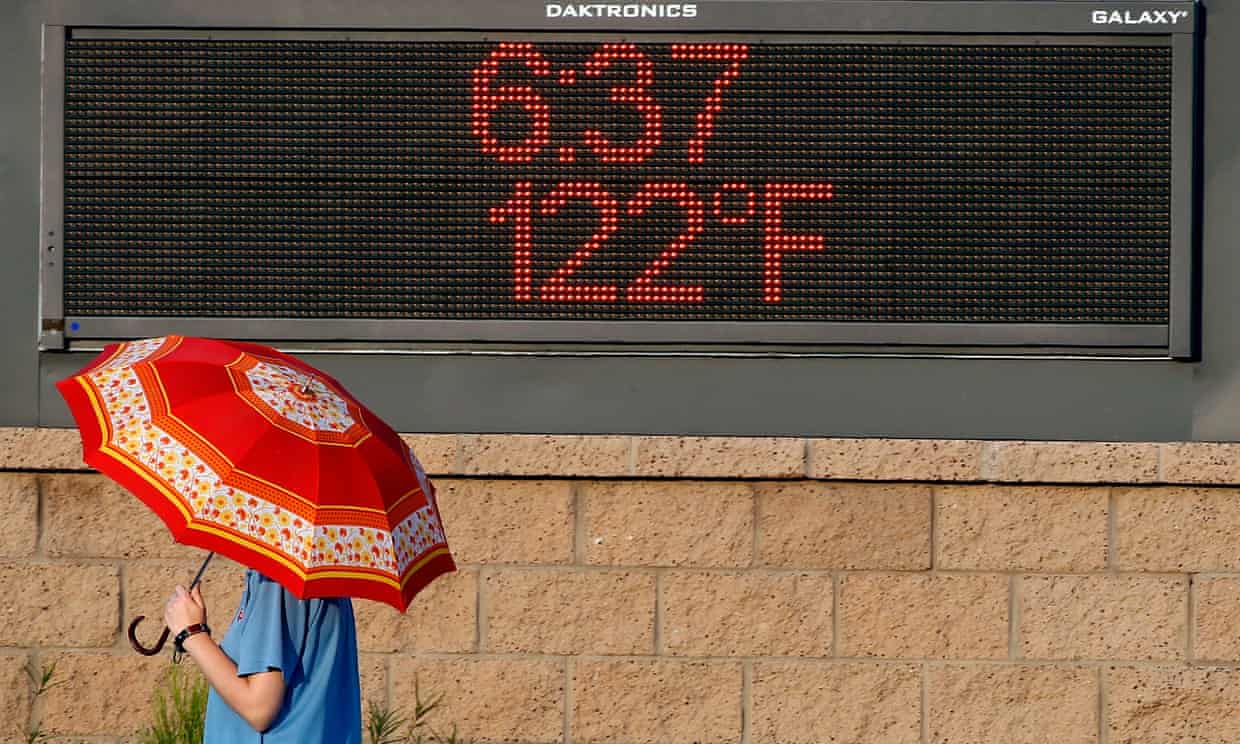America’s hottest city is nearly unlivable in summer. Can cooling technologies save it?
Phoenix’s new ‘heat tsar’ is betting on less asphalt, more green canopy and reflective surfaces to cool the sprawling heat island

"Phoenix’s new ‘heat tsar’ is betting on less asphalt, more green canopy and reflective surfaces to cool the sprawling heat island. . .David Hondula, the recently appointed director of Phoenix’s heat response and mitigation office has a warning, “2020 was a glimpse into the future – it’s the type of summer that could be normal by 2050 or 2080, so that’s what we need to be prepared for so that Phoenix is livable and thriving.”
For instance, the local health department has a highly-rated surveillance system but even then, the final tally and details of summer heat related fatalities are published the following February or March. “That leaves a very short window to plan for the next hot season, and deaths represent only the tip of a big iceberg … We have almost no knowledge about what conditions people experience in their homes,” said Hondula, a climate and health scientist who has spent more than a decade investigating the risks and vulnerabilities associated with heat.. .
[...] There are quick fire changes, or low-hanging fruit as Hondula puts it, which he thinks could have some immediate impact. . .
But it will take much broader changes to tackle the root causes driving deaths in the most vulnerable group: middle-aged men experiencing homelessness and substance misuse problems. “To reduce deaths, we need to be thinking way upstream and take steps to ease the housing affordability crisis and improve access to substance abuse and recovery services.”
Hondula recently submitted the 2022 heat response plan to city hall, in an attempt to coordinate the existing patchwork of services. “I’m impressed by the number of programs but the death and illness numbers are moving in the wrong direction, so there’s a disconnect we need to address,” he said. “If we mean to take a hazard seriously, relying on good fortune, luck and happenstance is not the best model.”
> Money is an issue. So far, the unit doesn’t have a budget for programs but there are options...The heat unit has bid for a slice of the city’s second American rescue plan installment, due in May, to fund a residential tree planting program targeting 25 neighborhoods with the least shade.
> Another sensitive and critical area is the city’s property development gravy train, which for years has been forging ahead faster than its ad hoc mitigation efforts. Hondula acknowledges that getting to grips with the gaps and loopholes in every part of the building process – from zoning and permitting to shade requirements and enforcement – will take time.
[...] Hondula argues, tackling urban heating could help turn around the city’s livability decline. “All cities have tiny hands on the big lever [of global heating] but the dominant driver of regional climate change has been urbanization, and that’s a lever we do have in our hands as local governments.
“Some modeling suggests with widespread deployment of cooling technologies like trees and reflective surfaces, we could end up with a city in the future that is cooler than we have today even with continued global scale warming, which is a very encouraging sign.”


No comments:
Post a Comment